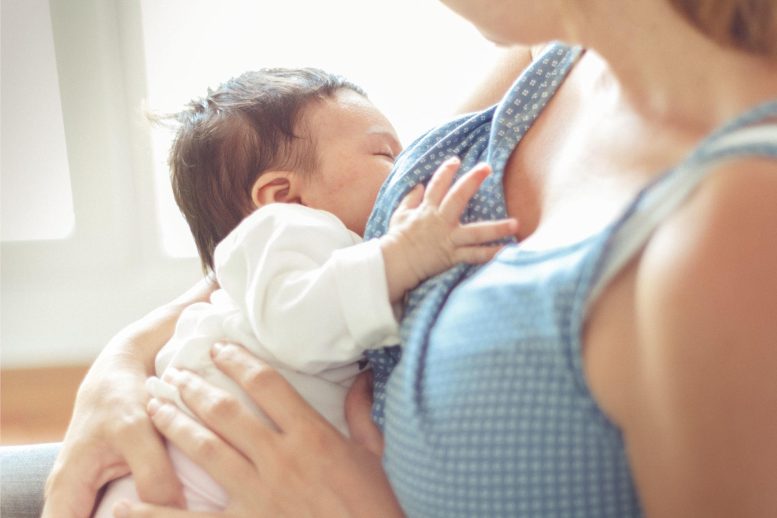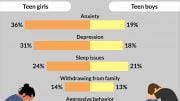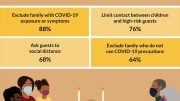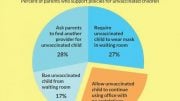
Breastfeeding is a natural and beneficial way to nourish infants, providing them with essential nutrients and antibodies for optimal growth and development. It offers numerous health benefits for both the baby and the mother, promoting bonding and reducing the risk of various illnesses. While breastfeeding is a personal choice, it is widely recommended by healthcare professionals as the ideal source of nutrition for newborns during the first six months of life.
The research findings provide support for the implementation of a nationwide paid family leave policy.
A recent study led by the University of California, San Francisco (UCSF) has found that during the COVID-19 shelter-in-place orders, American mothers breastfed their babies for an additional two weeks compared to pre-pandemic times.
“Stay-at-home policies enabled parents to continue breastfeeding at home instead of returning to the workplace,” said first author Rita Hamad, MD, Ph.D., UCSF associate professor in Family and Community Medicine, and the director of UCSF’s Social Policies for Health Equity Research Program. “This suggests a pent-up demand for breastfeeding which may be stymied by the lack of a national paid family leave policy in the U.S.”
The American Academy of Pediatrics recommends six months of exclusive breastfeeding, citing the extensive health benefits it provides to both the infant and the parent.
Gains in breastfeeding duration during shelter-in-place were most dramatic for white women and those of higher income, probably because these groups had jobs that could be done at home more easily, the study noted. Hispanic parents were more likely to have “essential,” lower-wage jobs during the pandemic, according to the study, so breastfeeding gains in this group were more modest.
“Once again, the pandemic served to highlight an area of health inequity – differences in workplaces that facilitate breastfeeding,” said Hamad.
The study was recently published in the American Journal of Public Health.
A Natural Experiment
Researchers used workplace closures during the early pandemic timeframe (March-April 2020) as a natural experiment to see if the ability to stay home changed breastfeeding patterns for new parents.
They used the 2017-2020 national survey and birth certificate data for 118,139 postpartum people to examine whether an infant was breastfed and, if so, for how long. They compared the initiation and duration of breastfeeding for babies born prior to, and after, shelter-in-place policies.
While initiation rates of breastfeeding didn’t change during the pandemic, women increased the length of time they breastfed from 12.6 weeks to 14.8 weeks, or 18%. White women had the biggest increase in duration at 19%, while Hispanic women had the smallest at 10.3%. High-income women had a larger increase than lower-income women, 18.5% and 16.8% respectively. The longer durations persisted through at least August 2020 before dropping to pre-pandemic levels.
The fact that breastfeeding initiation overall didn’t change in the early pandemic months may suggest that barriers to starting breastfeeding differ from those for continuing. However, Black and low-income subgroups did show a dip in initiation during the pandemic, which may reflect less access to breastfeeding support during shelter-in-place for these groups, the study said.
The U.S. ranks worse than most peer countries in breastfeeding initiation and duration and is the only high-income country without a national paid leave policy for new parents. Only 25% of U.S. private industry workers have access to paid family leave through employers, and people of color and low-wage workers are least likely to be eligible.
“Our study suggests that breastfeeding duration in the U.S. would be higher and more comparable to peer countries if working parents were paid while staying home to care for their newborns, particularly parents of color and those with lower income jobs who can’t afford to take unpaid time off work,” said Hamad.
Reference: “The Pent-Up Demand for Breastfeeding Among US Women: Trends After COVID-19 Shelter-in-Place” by Rita Hamad, MD, Ph.D., Daniel F. Collin, MPH, Alison Gemmill, Ph.D., MPH, Kaitlyn Jackson, MPH and Deborah Karasek, Ph.D., MPH, 18 May 2023, American Journal of Public Health.
DOI: 10.2105/AJPH.2023.307313








Breastfeeding is one of the first tactic invented by males to subjugate women. The (still present but underdeveloped) breast and nipple on the male body is the proof of that.
I dream of a day when women will also be able to free themselves of the slavery called child-birth. Human will born on machines and there will no longer be extremely different two sexes. There will be many and all sexes will be almost identical. And you won’t be able to apply male & female sexual identity on them, like you already can’t on many human-characters on kids cartoons.